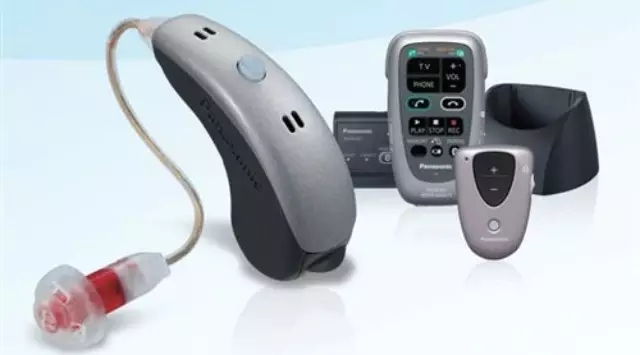If you are looking for the latest or most advanced hearing aid technology, then Bluetooth hearing aids are definitely an option you should consider and it is worth having and exploring. Bluetooth technology for hearing aids is a way for your hearing aids to communicate wirelessly with other devices, including binaural wireless communication between your hearing aids in both ears, and wireless communication between your hearing aids and other electronic devices such as computers, televisions, cell phones and digital music players. When selecting a Bluetooth hearing aid, you need to pay attention to a few details so that the features of your Bluetooth hearing aid are appropriate for your needs. Here are some things to keep in mind when choosing a Bluetooth hearing aid.
Bluetooth transmitter
Even though modern hearing aid technology continues to move towards smaller sizes, Bluetooth hearing aids still have to be equipped with a separate signal transmitter. You must wear this Bluetooth signal transmitter to allow wireless communication between your hearing aid and other devices. This Bluetooth transmitter may be hung around your neck, pinned to your belt, or carried in your pocket. When choosing a Bluetooth hearing aid, you should consider the size of the Bluetooth transmitter and how it will be worn. With most types of Bluetooth hearing aids, you must first activate the Bluetooth transmitter when you use the Bluetooth feature.
Ambient sound
A Bluetooth hearing aid transmits the received sound signal wirelessly directly to the hearing aid – that is, it does not receive the sound through a microphone. Therefore, some types of Bluetooth hearing aids turn off the microphone when you use the Bluetooth function to listen to sound. In this case, you can hear the sound transmitted through the Bluetooth signal, but it may be difficult to hear other sounds around you, for example, if you are talking to someone while watching TV. Therefore, you may need a Bluetooth hearing aid that allows you to turn the microphone on and off, and to increase or decrease the microphone amplification volume, like Spieth’s Bluetooth hearing aids, so that you can talk to other people normally while using the Bluetooth function.
Setup and technology
Not all electronics automatically emit Bluetooth signals, so you may have to set them up to communicate with Bluetooth hearing aids. Technologically advanced electronics, such as newer computers and cell phones, generally have built-in Bluetooth technology. But some older electronics may not, so you’ll have to plug a small device into the TV, computer, phone or other electronics you want to listen to Bluetooth wirelessly. Your hearing aid provider will also have instructions for linking your Bluetooth transmitter to your hearing aid, so ask your hearing aid dispenser if you don’t know how to do this.
Cost and Care
Hearing aids with Bluetooth capability tend to be more expensive and are only available in the mid- to high-end range and above. You also need to be careful to dry and protect your hearing aids from moisture so they can track the Bluetooth transmitter.
Hearing aid technology has come a long way with the help of Bluetooth. Not only can hearing aids listen directly to phone and TV signals, but they can also connect to almost any electronic device that produces sound and communicate directly wirelessly. You don’t have to worry about muffled sound or whistling from your hearing aid, that crystal clear sound helps you listen easier and clearer, you can enjoy the audio signal easier without turning up the volume of your hearing aid and also have a conversation with others.
More articles about hearing aid information.
TOP 10 BENEFITS OF WEARING BINAURAL HEARING AIDS
SPIETH TAKES YOU THROUGH RIC HEARING AIDS IN ONE ARTICLE
HOW TO CHOOSE THE RIGHT HEARING AID PRODUCT?
INTRODUCTION OF RECHARGEABLE BTE OE HEARING AIDS
WEAR HEARING AIDS STEP BY STEP
Post time: Aug-30-2021
